MARKETING
Why and How To Add Mentoring to Your Content Career Plan
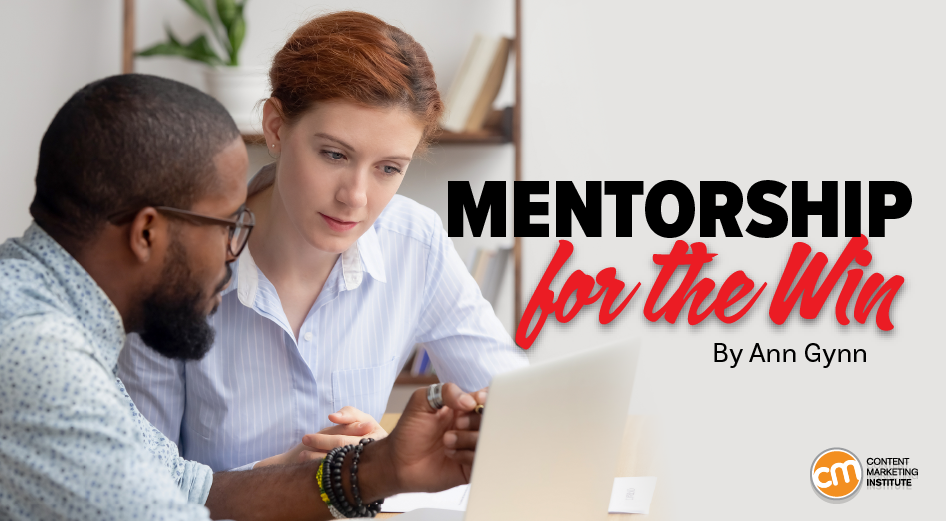
Mentorships took the No. 1 spot in LinkedIn’s 2023 Workplace Learning Report.
The subject beat diversity, equity, and inclusion (No. 2), upskilling and reskilling (No. 3), leading through change (No. 6), digital fluency transformation (No. 7), and hybrid/flex work (No. 9), to name a few.
Mentoring’s top ranking doesn’t surprise me, given its proven impact on career development. It’s one of the reasons the Content Marketing Institute launched its year-long mentor program in 2021. (Applications for the 2024 program are available through March 1.)
Benefits of mentoring
Much research on mentoring focuses on the benefits for youth, but the benefits don’t stop after you graduate.
A Deloitte-sponsored study detailed the non-monetary benefits of mentoring, including:
- 87% of mentors and mentees say they feel empowered by their relationship and have developed greater confidence.
- 82% say their mentoring relationships help foster meaningful connections between the mentor and mentee and across departments and the organization.
- 84% say their relationship provides two-way inspiration.
Earlier this century, Gartner conducted a five-year study of Sun Microsystems’ mentorship program. Among the findings:
- 25% of employees in the program saw a salary increase compared to 5% of the workers who did not participate.
- Mentees were promoted five times more often than those without mentors.
But the benefits don’t stop with the mentees. Mentors at Sun were six times more likely to be promoted than non-mentors.
Mentor perspective
Over the years, Vish Khanna added the mentor role to his experience, first as a coach for his child’s sports team and later in his professional world — building marketing teams in a way that requires mentorship. The 2015 Content Marketer of the Year now works as the head of marketing at Shelf.
As he explains, Vish hires marketing makers, not marketing managers. “I’ve got to find the right person and nurture their skillset and ability to play that type of (manager) role, and that demands mentorship,” he says.
For the past two years, he’s also participated as a mentor in the Content Marketing Institute’s program. “A good mentor-mentee relationship is very much peer-based. I just may have a decade more experience.
“I was surprised by how much these conversations with my mentees have made real changes in their day-to-day workflows and how I do my job. I’ve made substantial changes in my approach to marketing based on what I’ve learned from my mentees.”
CMI mentor Deanna Ransom, co-founder and co-CEO of Red Monkey Consulting, agrees. “What I have truly enjoyed is the opportunity to be able to both give and receive from the relationship,” she says.
Vish says he touches base with his former mentees every month or two and sometimes asks for advice because they know Vish’s business challenges really well.
But that strong relationship started with an approach Vish learned from working with many startups and product planning — asking dozens of questions right away to identify the mentee’s challenge(s).
“Run through 20 questions through a pipeline, and you’re going to hit a bunch of holes. It’s just the nature (of things) because not everybody has everything tightened up,” Vish says. “You get there (identifying the challenges) pretty quickly — what’s happening on a tactical and structural level in somebody’s marketing engine — and then figure out.”
But before asking questions or sharing thoughts, Vish and his mentees signed a non-disclosure agreement. He says the document lets both parties speak honestly and openly about their challenges.
Mentee perspective
Vahag Aydinyan, now a senior content marketing manager at 7shifts, was a mentee in the CMI program in 2022. It went so well that he and his mentor, Megan Gilhooly, continued to meet monthly last year.
While Vahag has had some short-term mentors, the CMI program was his first in a formal program. As a then-new content marketing manager who needed to scale a team of one into a team of four, he was eager for a mentor’s input.
He says two outcomes from the mentorship have been helpful:
- Learning a lot from someone who has gone through the same stuff in her career. He says he could tackle challenges easier because he had someone to help him.
- Receiving validation for his ideas and solutions from an experienced professional before he shared them in the workplace.
The mentoring pair usually met once a month, though sometimes he would ask to jump on a call to bring up a topic important at the moment. “I come with notes … the more prepared you are for this kind of meeting, the more you get out of it,” Vahag says.
Among Vahag’s advice for mentees:
- Be clear with expectations.
- Make sure to put in enough thought. Make it easy for your mentor to help you.
- Be open to the mentor’s advice, even if it’s something you may not want to hear.
How to find a mentor
An Olivet Nazarene study found that 61% of mentors and mentees work at the same company. But there are advantages to working with a mentor who doesn’t have the same employer.
Divya Bisht, a content strategist, worked with mentor Keneisha Williams in the CMI program before becoming a Content Marketing World speaker. “It can be difficult to get advice from a workplace supervisor. But with a mentor who worked outside of my company, it was easier to get feedback and gain valuable insight,” Divya says. “Keneisha offered a fresh external perspective on my projects, helping me see what went right, why certain elements failed, and what I could improve in the future. She really helped me grow as a strategist.”
You can still find a mentor or mentee if you don’t participate in a formal mentor program like CMI’s. The Olivet study found that 25% of mentees were invited by their mentors, and 14% asked someone to mentor them.
Treat your mentor search like a lead-generation activity — you’ll likely reach out to many, with one or two converting into a mentor-type relationship. That’s what Vish says he’s done. He’s reached out to people who have done something that interests him and lets them know he wants to learn more about that thing. A couple of those outreach opportunities turned into long-term relationships.
He shares one example from a previous role in organizing author events. Vish’s hero was Frank Chin, an author and pioneer in Asian-American theater. He asked Frank to attend. The invitation was accepted, and Vish spent time with him over the three days. “The relationship continued for years after that,” Vish says.
Expand your search for mentors outside your industry. “One of my greatest mentors who taught me about commercialization in the pharmaceutical industry was a doctor — working closely with him and learning about an entire business world,” Vish says.
After the NDA
Though a non-disclosure agreement is a smart first step, it’s not the only document that should be created. Both mentor and mentee should get on the same page as far as expectations and how the two will work together.
EDUCAUSE offers this helpful guide on mentorships. It details the four phases of the relationship – preparation, negotiating, enabling growth, and closure. It includes a pre-partnership checklist to ensure you’re ready to do it, as well as interview questions to identify potential topics and more. I particularly find its agreement checklist helpful to ensure each person understands the relationship and expectations. Among the questions:
- How much time can be committed regularly to the relationship? Be realistic.
- Write down goals and analyze them to meet the SMART criteria.
- Agree on a discussion format (e.g., formal agendas, topic-driven agendas, check-in conversations).
- Be flexible. Expectations and plans will change as your relationship progresses.
- Articulate criteria for success. What does success “look” like?
I’d like to share your mentoring experiences with CMI readers. Have you had a mentor or mentee? How did you find your partner? What did you like about it? What could have been better? Please tag us on social media.
Updated from a January 2023 article.
HANDPICKED RELATED CONTENT: Education as a Marketing Strategy: 8 Brands Doing Online Classes and More
Cover image by Joseph Kalinowski/Content Marketing Institute
MARKETING
YouTube Ad Specs, Sizes, and Examples [2024 Update]
![YouTube Ad Specs, Sizes, and Examples [2024 Update] YouTube Ad Specs, Sizes, and Examples](https://articles.entireweb.com/wp-content/uploads/2024/06/YouTube-Ad-Specs-Sizes-and-Examples.jpg)
Introduction
With billions of users each month, YouTube is the world’s second largest search engine and top website for video content. This makes it a great place for advertising. To succeed, advertisers need to follow the correct YouTube ad specifications. These rules help your ad reach more viewers, increasing the chance of gaining new customers and boosting brand awareness.
Types of YouTube Ads
Video Ads
- Description: These play before, during, or after a YouTube video on computers or mobile devices.
- Types:
- In-stream ads: Can be skippable or non-skippable.
- Bumper ads: Non-skippable, short ads that play before, during, or after a video.
Display Ads
- Description: These appear in different spots on YouTube and usually use text or static images.
- Note: YouTube does not support display image ads directly on its app, but these can be targeted to YouTube.com through Google Display Network (GDN).
Companion Banners
- Description: Appears to the right of the YouTube player on desktop.
- Requirement: Must be purchased alongside In-stream ads, Bumper ads, or In-feed ads.
In-feed Ads
- Description: Resemble videos with images, headlines, and text. They link to a public or unlisted YouTube video.
Outstream Ads
- Description: Mobile-only video ads that play outside of YouTube, on websites and apps within the Google video partner network.
Masthead Ads
- Description: Premium, high-visibility banner ads displayed at the top of the YouTube homepage for both desktop and mobile users.
YouTube Ad Specs by Type
Skippable In-stream Video Ads
- Placement: Before, during, or after a YouTube video.
- Resolution:
- Horizontal: 1920 x 1080px
- Vertical: 1080 x 1920px
- Square: 1080 x 1080px
- Aspect Ratio:
- Horizontal: 16:9
- Vertical: 9:16
- Square: 1:1
- Length:
- Awareness: 15-20 seconds
- Consideration: 2-3 minutes
- Action: 15-20 seconds
Non-skippable In-stream Video Ads
- Description: Must be watched completely before the main video.
- Length: 15 seconds (or 20 seconds in certain markets).
- Resolution:
- Horizontal: 1920 x 1080px
- Vertical: 1080 x 1920px
- Square: 1080 x 1080px
- Aspect Ratio:
- Horizontal: 16:9
- Vertical: 9:16
- Square: 1:1
Bumper Ads
- Length: Maximum 6 seconds.
- File Format: MP4, Quicktime, AVI, ASF, Windows Media, or MPEG.
- Resolution:
- Horizontal: 640 x 360px
- Vertical: 480 x 360px
In-feed Ads
- Description: Show alongside YouTube content, like search results or the Home feed.
- Resolution:
- Horizontal: 1920 x 1080px
- Vertical: 1080 x 1920px
- Square: 1080 x 1080px
- Aspect Ratio:
- Horizontal: 16:9
- Square: 1:1
- Length:
- Awareness: 15-20 seconds
- Consideration: 2-3 minutes
- Headline/Description:
- Headline: Up to 2 lines, 40 characters per line
- Description: Up to 2 lines, 35 characters per line
Display Ads
- Description: Static images or animated media that appear on YouTube next to video suggestions, in search results, or on the homepage.
- Image Size: 300×60 pixels.
- File Type: GIF, JPG, PNG.
- File Size: Max 150KB.
- Max Animation Length: 30 seconds.
Outstream Ads
- Description: Mobile-only video ads that appear on websites and apps within the Google video partner network, not on YouTube itself.
- Logo Specs:
- Square: 1:1 (200 x 200px).
- File Type: JPG, GIF, PNG.
- Max Size: 200KB.
Masthead Ads
- Description: High-visibility ads at the top of the YouTube homepage.
- Resolution: 1920 x 1080 or higher.
- File Type: JPG or PNG (without transparency).
Conclusion
YouTube offers a variety of ad formats to reach audiences effectively in 2024. Whether you want to build brand awareness, drive conversions, or target specific demographics, YouTube provides a dynamic platform for your advertising needs. Always follow Google’s advertising policies and the technical ad specs to ensure your ads perform their best. Ready to start using YouTube ads? Contact us today to get started!
MARKETING
Why We Are Always ‘Clicking to Buy’, According to Psychologists

Amazon pillows.
MARKETING
A deeper dive into data, personalization and Copilots
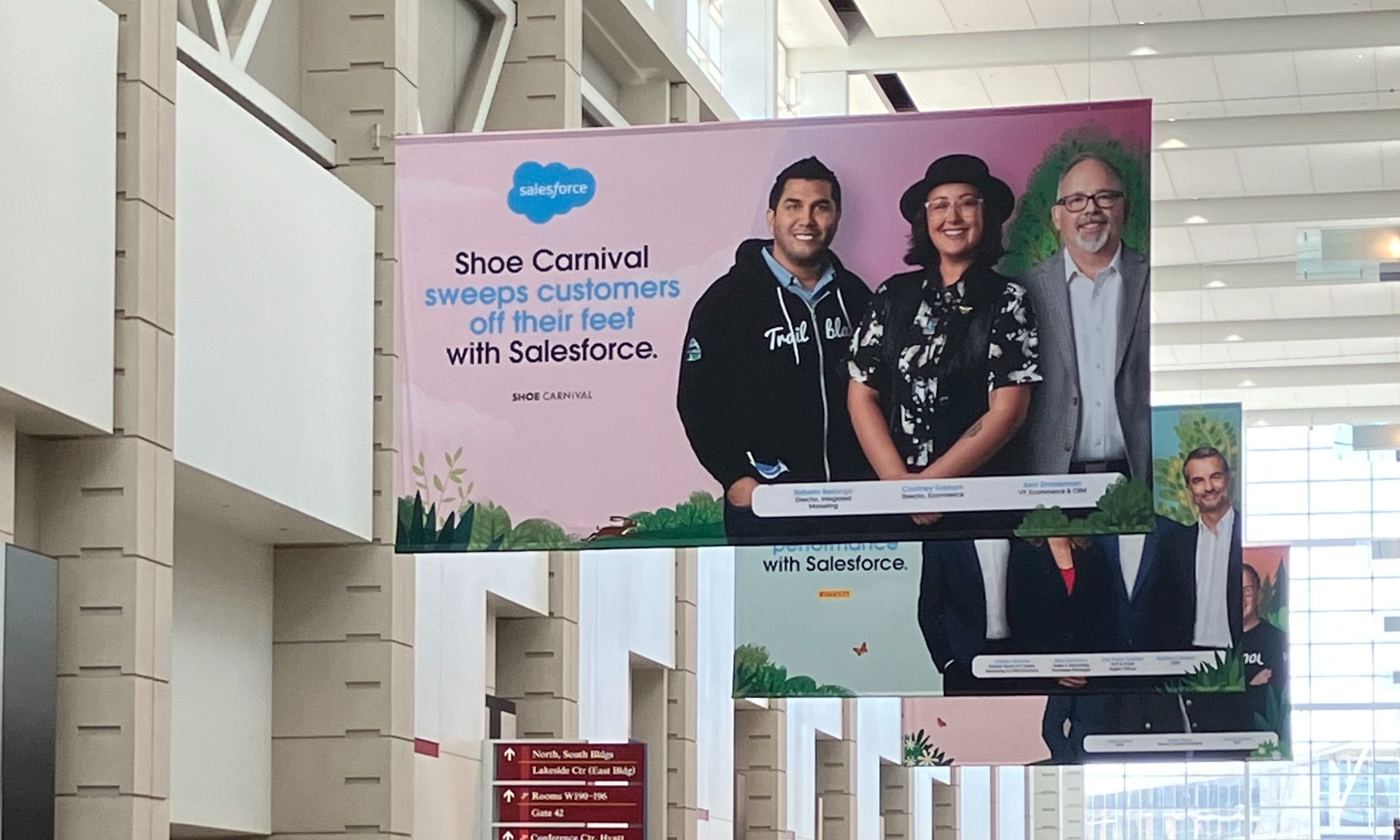
Salesforce launched a collection of new, generative AI-related products at Connections in Chicago this week. They included new Einstein Copilots for marketers and merchants and Einstein Personalization.
To better understand, not only the potential impact of the new products, but the evolving Salesforce architecture, we sat down with Bobby Jania, CMO, Marketing Cloud.
Dig deeper: Salesforce piles on the Einstein Copilots
Salesforce’s evolving architecture
It’s hard to deny that Salesforce likes coming up with new names for platforms and products (what happened to Customer 360?) and this can sometimes make the observer wonder if something is brand new, or old but with a brand new name. In particular, what exactly is Einstein 1 and how is it related to Salesforce Data Cloud?
“Data Cloud is built on the Einstein 1 platform,” Jania explained. “The Einstein 1 platform is our entire Salesforce platform and that includes products like Sales Cloud, Service Cloud — that it includes the original idea of Salesforce not just being in the cloud, but being multi-tenancy.”
Data Cloud — not an acquisition, of course — was built natively on that platform. It was the first product built on Hyperforce, Salesforce’s new cloud infrastructure architecture. “Since Data Cloud was on what we now call the Einstein 1 platform from Day One, it has always natively connected to, and been able to read anything in Sales Cloud, Service Cloud [and so on]. On top of that, we can now bring in, not only structured but unstructured data.”
That’s a significant progression from the position, several years ago, when Salesforce had stitched together a platform around various acquisitions (ExactTarget, for example) that didn’t necessarily talk to each other.
“At times, what we would do is have a kind of behind-the-scenes flow where data from one product could be moved into another product,” said Jania, “but in many of those cases the data would then be in both, whereas now the data is in Data Cloud. Tableau will run natively off Data Cloud; Commerce Cloud, Service Cloud, Marketing Cloud — they’re all going to the same operational customer profile.” They’re not copying the data from Data Cloud, Jania confirmed.
Another thing to know is tit’s possible for Salesforce customers to import their own datasets into Data Cloud. “We wanted to create a federated data model,” said Jania. “If you’re using Snowflake, for example, we more or less virtually sit on your data lake. The value we add is that we will look at all your data and help you form these operational customer profiles.”
Let’s learn more about Einstein Copilot
“Copilot means that I have an assistant with me in the tool where I need to be working that contextually knows what I am trying to do and helps me at every step of the process,” Jania said.
For marketers, this might begin with a campaign brief developed with Copilot’s assistance, the identification of an audience based on the brief, and then the development of email or other content. “What’s really cool is the idea of Einstein Studio where our customers will create actions [for Copilot] that we hadn’t even thought about.”
Here’s a key insight (back to nomenclature). We reported on Copilot for markets, Copilot for merchants, Copilot for shoppers. It turns out, however, that there is just one Copilot, Einstein Copilot, and these are use cases. “There’s just one Copilot, we just add these for a little clarity; we’re going to talk about marketing use cases, about shoppers’ use cases. These are actions for the marketing use cases we built out of the box; you can build your own.”
It’s surely going to take a little time for marketers to learn to work easily with Copilot. “There’s always time for adoption,” Jania agreed. “What is directly connected with this is, this is my ninth Connections and this one has the most hands-on training that I’ve seen since 2014 — and a lot of that is getting people using Data Cloud, using these tools rather than just being given a demo.”
What’s new about Einstein Personalization
Salesforce Einstein has been around since 2016 and many of the use cases seem to have involved personalization in various forms. What’s new?
“Einstein Personalization is a real-time decision engine and it’s going to choose next-best-action, next-best-offer. What is new is that it’s a service now that runs natively on top of Data Cloud.” A lot of real-time decision engines need their own set of data that might actually be a subset of data. “Einstein Personalization is going to look holistically at a customer and recommend a next-best-action that could be natively surfaced in Service Cloud, Sales Cloud or Marketing Cloud.”
Finally, trust
One feature of the presentations at Connections was the reassurance that, although public LLMs like ChatGPT could be selected for application to customer data, none of that data would be retained by the LLMs. Is this just a matter of written agreements? No, not just that, said Jania.
“In the Einstein Trust Layer, all of the data, when it connects to an LLM, runs through our gateway. If there was a prompt that had personally identifiable information — a credit card number, an email address — at a mimum, all that is stripped out. The LLMs do not store the output; we store the output for auditing back in Salesforce. Any output that comes back through our gateway is logged in our system; it runs through a toxicity model; and only at the end do we put PII data back into the answer. There are real pieces beyond a handshake that this data is safe.”
-
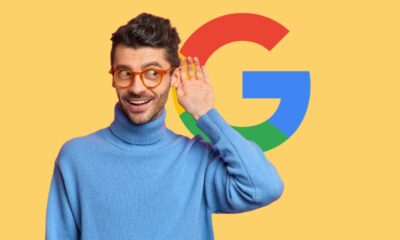
 SEO7 days ago
SEO7 days agoGoogle’s Revamped Documentation Shows 4 Reasons To Refresh Content
-
SEARCHENGINES5 days ago
Daily Search Forum Recap: August 26, 2024
-
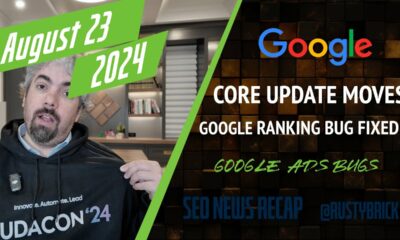
 SEARCHENGINES7 days ago
SEARCHENGINES7 days agoGoogle Ranking Bug Fixed, August Core Update Swings, AI Overviews, Google Ads Bug & More
-
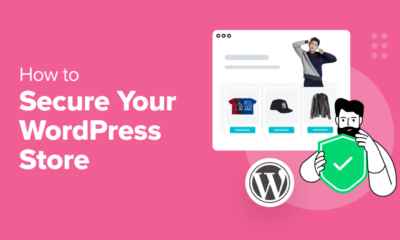
 WORDPRESS7 days ago
WORDPRESS7 days agoHow to Secure Your WordPress Store
-
SEARCHENGINES4 days ago
Daily Search Forum Recap: August 27, 2024
-

 AFFILIATE MARKETING7 days ago
AFFILIATE MARKETING7 days agoBusiness Owners are Batting 1,000 With This All-in-One Management Hub
-
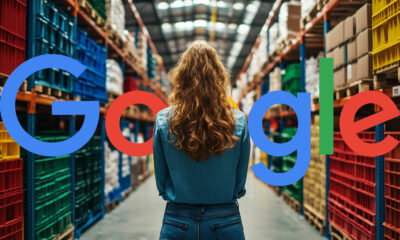
 SEARCHENGINES6 days ago
SEARCHENGINES6 days agoGoogle Migrating All To Google Merchant Center Next By September
-
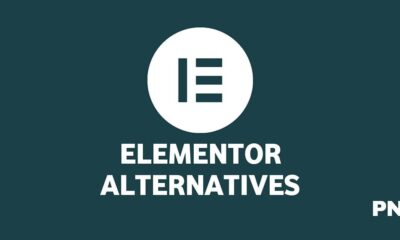
 WORDPRESS5 days ago
WORDPRESS5 days ago9 Best Elementor Alternatives 2024 (Faster Page Builders)














